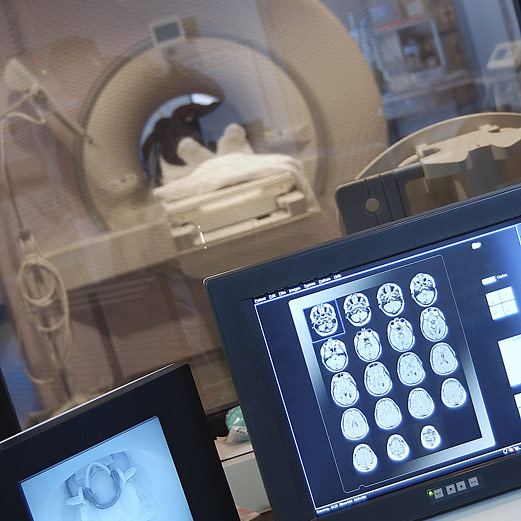
Here are some of the latest health and medical news developments, compiled by the editors of HealthDay:
Changes Seen in Substance Abuse Treatment Admissions
Patterns of substance abuse treatment in the United States have changed over the past decade, with a larger percentage of people 12 and older now treated for drug use alone, a new U.S. report shows.
Treatment admissions attributed to drug abuse alone rose from 26 percent in 1998 to 37 percent in 2008, says a study released Wednesday by the Substance Abuse and Mental Health Services Administration (SAMHSA). The study also found that admissions involving alcohol abuse alone dropped from 27 percent in 1998 to 23 percent in 2008.
The percentage of patients treated for co-abusing drugs and alcohol declined gradually — from 44 percent to 38 percent — during the 10-year period, the report noted.
Other trends noted in the study:
- Five substances were involved in 96 percent of treatment admissions: alcohol, marijuana, opiates, cocaine and stimulants (mainly methamphetamine).
- Opiate admissions increased from 16 percent of admissions in 1998 to 20 percent in 2008.
- Cocaine admissions decreased from 15 percent in 1998 to 11 percent in 2008.
- Admissions for marijuana use rose from 13 percent in 1998 to 17 percent in 2008.
- Stimulant admissions grew from 4 percent in 1998 to 6 percent in 2008.
- Marijuana was a primary or secondary substance in 79 percent of adolescent treatment admissions.
“This survey provides valuable insight into the changing nature and source of substance abuse treatment admissions,” SAMHSA Administrator Pamela S. Hyde said in a news release. The findings can help lead to more effective treatment programs, she said.
—–
Osteoporosis Screenings Increase Dramatically
More women age 65 and older on Medicare are getting recommended osteoporosis screenings, says a new U.S. report that found the number who had bone density or bone mass screenings nearly doubled over a recent five-year period.
In 2006, 64 percent of women in that population said they had been screened for osteoporosis compared with 34 percent in 2001, according to the latest News and Numbers from the Agency for Healthcare Research and Quality.
The agency also found that:
- The percentage of white women who reported osteoporosis screening jumped from 36 percent to 67 percent during those years.
- Hispanic women reported a dramatic increase in screening, from 22 percent to 55 percent.
- The number of black women who said they were screened also rose significantly — from 16 percent to 38 percent.
- Income seems to have an effect on screening rates. Just 46 percent of low-income women reported being screened by 2006, compared with 80 percent of high-income women.
The U.S. Preventive Services Task Force advises women age 65 and older to undergo routine osteoporosis screening. Women are more likely than men to develop the disabling disease, which can lead to fractured bones, limited mobility and even death.
—–
Swallowing Topical Benadryl Gel Can Be Hazardous: FDA
Consumers who mistakenly swallow Benadryl Extra Strength Itch Stopping Gel, an over-the-counter product for use on the skin, could suffer serious side effects, the U.S. Food and Drug Administration warned Wednesday.
Swallowing the gel can expose people to a dangerous amount of the active ingredient, diphenhydramine, which can cause unconsciousness, hallucinations, and confusion, the agency said.
Some Benadryl products are meant to be swallowed, which may explain why some people erroneously ingest the gel, experts said.
“Consumer confusion and incorrect product use are serious public health issues,” Carol Holquist, director of the FDA’s Division of Medication Error Prevention and Analysis, said in a news release. “FDA is advising consumers and pharmacies to store products for the skin separately from products that should be swallowed.”
The gel’s manufacturer, Johnson & Johnson, has repackaged the product, adding the statement “For Skin Use Only” to the label of packages now in stores, the FDA said.
—–
Mentally Ill Get Jail Time Rather Than Treatment: Report
If you have a serious mental illness in the United States, you’re far more likely to be jailed than admitted to a hospital for treatment, according to a report released Wednesday.
“These people should be getting treatment, not jail time,” said report co-author James Pavle, executive director of the Treatment Advocacy Center, a non-profit group based in Arlington, Va., USA Today reported.
Although regional variations were noted, on average, someone with an illness like schizophrenia or bipolar disorder was three times more likely to be sent to jail than hospitalized, the report from the National Sheriffs’ Association and the Treatment Advocacy Center found.
“It is now extremely difficult to find a bed for a seriously mentally ill person who needs to be hospitalized,” Pavle and his colleagues wrote. In 1955, one psychiatric bed existed for every 300 Americans. By 2005, only one bed was available for every 3,000 Americans. Fewer beds are available largely because of the deinstitutionalization movement begun in the 1960s, USA Today said.
“We’re not trying to say this is a criminal population,” said Pavle. “All they have to do is step over a line — public urination, a misdemeanor. Then they get in jail, and the whole thing can spin out of control.”
The report relied on newly published 2004-2005 data provided by the U.S. Department of Health and Human Services and the Bureau of Justice.
—–
FDA Alerting Professionals to Misleading Drug Ads
A new effort to help health care providers spot misleading or false prescription drug advertising and promotions was launched Tuesday by the U.S. Food and Drug Administration.
“The Bad Ad Program will help health care providers recognize misleading prescription drug promotion and provide them with an easy way to report this activity to the agency,” said Thomas Abrams, director of the agency’s Division of Drug Marketing, Advertising, and Communications (DDMAC), in an agency statement.
The agency said it would launch the program at selected medical conventions and distribute educational materials in partnership with specific medical societies.
The FDA has limited ability to monitor marketing activity that occurs in private, and this new campaign aims to alert doctors and other health care providers to report irregularities.
Suspected violations in drug promotion activity can be reported by sending an email to badad@fda.gov or calling 877-RX-DDMAC. Although reports can be submitted anonymously, the FDA prefers to receive contact information in case follow-up is needed.

